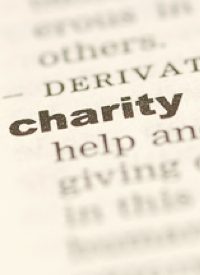
If the government were to measure unemployment based on Hunter’s calculation, unemployment would spike from the current 8.3-percent rate to 9.6 percent — which critics say will further debase the Obama administration’s already paling record on jobs and economic growth.
Currently, the BLS measures both figures, but reports the "U-3 rate" as the nation’s official unemployment figure. The Hill explains the difference between the U-3 and U-5 rates:
The U-5 stat measures, "total unemployed, plus discouraged workers, plus all other persons marginally attached to the labor force, as a percent of the civilian labor force plus all persons marginally attached to the labor force," while the U-3 stat or the "official unemployment rate," measures, "total unemployed, as a percent of the civilian labor force."
So if Hunter’s one-page bill, entitled the "REAL Unemployment Calculation Act" (H.R. 4128), were to become law, the official U.S. unemployment rate would now stand at 9.6 percent, more than one percent higher than what the BLS is presently estimating.
The San Diego-based lawmaker was quick to point out that his ambition is not to make the President’s job performance appear any less favorable, because such unemployment reflects poorly on all elected representatives. "If a Republican gets elected this year and gets sworn in next year this will be their unemployment figure too. So you have to have truth no matter who it hurts or who it actually affects," Hunter asserted during an interview with Fox News. "You have to have the actual truth, that’s what we need here — truth to power. And that’s how things start getting fixed."
He added, "It makes me look bad too when unemployment is sliding.… It makes the Republican Congress, the president and the Democratic Senate — anybody who is an elected representative and in charge look bad. I don’t think it goes one way."
Hunter affirmed in a recent press release:
In order to effectively address the economic challenges we face, and confront the national unemployment situation, we must know the full extent of the problem…. As some pundits and politicians cite a near 8 percent unemployment rate, they are purposely avoiding a subset of Americans who are not counted. The Bureau of Labor Statistics does in fact provide alternative measurements of unemployment, but they are consistently overshadowed by the U-3 rate, which ignores a large group of people. We need to be realistic and focus our attention on the figure that provides the most accurate representation of national unemployment — not the figure that under-represents the challenge we face.
The revised calculation would not require any new numbers to be crunched; rather, it would use a figure the BLS already gauges each month, alongside the "official" unemployment rate and a few other statistics. While the government made some alterations to how unemployment is measured in 1994 — tacking on calculations such as the U-5 rate — the definition of the official unemployment rate has remained largely unchanged, according to a BLS report on the "alternative unemployment measures" released in 1994.
"Since the inception of the survey in 1940, only relatively minor changes have been made to the official definition of unemployment, despite numerous outside reviews and ongoing assessments by academicians, business and labor organizations and various interest groups," asserted John Bregger, former assistant commissioner of the Office of Current Employment Analysis. "The official measure has withstood the test of time largely because of its objectivity."
However, The Hill reports, the U-5 rate still does not include the reasons why certain Americans have ceased searching for work, such as those deciding to pursue further education or those who realize there are no jobs available in their local area — nor does it account for those Americans who are on unemployment insurance.
As breitbart.com reported Saturday, a record 87.9 million Americans are absent from the U.S. labor force. And when the number of Americans who have stopped looking for work and/or those who are working part-time because they cannot find full-time employment are included, the real unemployment rate hovers just above 19 percent.



